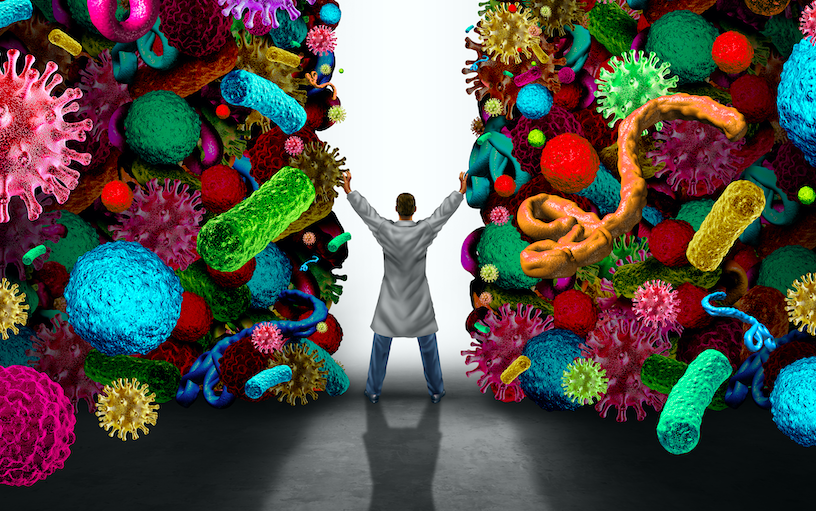
The Fascinating Journey of Peripheral Blood Mononuclear Cells
By Lorna Tolentino, Flow Cytometry Lab Manager
Peripheral blood mononuclear cells (PBMCs) are a category of white blood cells that are of particular interest to researchers because of their unique structure. White blood cells can be broken down into two categories: granular and agranular. PBMCs are of the agranular variety, meaning that their cytoplasm does not contain granules, which are small sacs that carry enzymes involved in the immune response. This doesn’t mean that they are not important! Rather, all types of white blood cells are designed for the specific roles they play in the immune response.
Agranular PBMCs are divided into two types: lymphocytes and monocytes. Lymphocytes, which include B, T and NK cells, are the second most common type of white blood cell, making up about 30% overall. They help determine how the immune system should respond based on the type of pathogen in the body and are particularly valuable to researchers, too, for their role in fighting off chronic infections. Monocytes, on the other hand, make up only about 5% of white blood cells. The larger of the two, monocytes are most known for surrounding and engulfing pathogens and reducing inflammation during infection.
Because PBMCs are responsible for only a fraction of the immune response, requesting these products allows researchers to get a really detailed picture as to how specific cells may interact with whatever they are testing, be it a type of cancer, a new therapeutic drug, etc. PBMCs from our donors can also be used as healthy controls so that when researchers are studying various illnesses, particularly chronic illnesses or autoimmune issues, they can see where the immune system in a sick person may be “going wrong.”
Though researchers can get pretty specific as to what types of PBMCs they need, in general, a PBMC order works like so: A researcher places the request, and our Research and Clinical Services team works to make sure a regular donor is identified who will meet the requests of the researcher (e.g., may be a specific gender or age). Usually, these products are taken from a regular whole blood or platelet donation. The white cells, which would otherwise be discarded since they cannot be transfused to patients, are separated out and delivered to the Flow Cytometry Laboratory (Flow Lab) for further separation and refinement. There, the white blood cells are placed in a centrifuge for a process called “gradient separation.” The process usually takes two hours or more to isolate the PBMCs, which could be further separated into different types of white blood cells and their subsets, depending on the request. Furthermore, the Flow Lab will assay for the purity and viability of the cell suspension using a special instrument in the lab.
From there, a portion of the PBMC suspension is taken to a cell counter instrument to obtain an accurate count of the total PBMCs. Typically, one whole blood donation will yield at least 250 million of these cells!
The last step in the Flow Lab is to “wash” the cells, which involves removing the suspension that was used to get the cell count from the last step and making any final purifications to the product. The washing takes about two hours, after which the PBMC order is ready to be picked up and used to help further medical understanding for the betterment of patient care!
So, while the white cells from your next donation likely won’t be going directly to hospital patients, don’t count them out just yet! For as small and few as they are, they may be helping researchers make huge strides for the patients of tomorrow.
